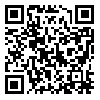BibTeX | RIS | EndNote | Medlars | ProCite | Reference Manager | RefWorks
Send citation to:
URL: http://jmed.ssu.ac.ir/article-1-703-en.html
Introduction:Universities and educational institutes provide a great variety of e-learning programs to accommodate the increasing demands for higher education. However, some specialists believe that many of these courses fail to meet the required standards of e-learning, thus cannot achieve the goals of implemented programs. Therefore, regular quality assessment of e-learning programs should be carried out by education providers. This study aimed to assess the quality of medical education e-learning course at Mashhad University of Medical Science.
Methods:In the first step, most important components of e-learning standards were extracted through a comprehensive literature review of previous studies and a rating scale consisting of nine elements and 173 items were designed. Content validity of the scale was assured by consulting with ten different instructional design experts using Lawshe's Content Validity Ratio. Reliability of this scale is also investigated by inter-rater reliability coefficient which was 88% . In the next step we provided three instructional design experts with the above mentioned scale to collect required information for each sample lesson. Data was analyzed through SPSS Ver 16.0 software.
Result: The elements associated with ‘quality of contents’ and ‘accessibility’ were satisfactory, elements related to ‘instructional design’, ’learning management system’, ’multimedia’ and ‘student assessment’ were relatively satisfactory, and elements associated with ‘interaction’, ‘feedback’ and ‘student support’ were unsatisfactory. Overall, we evaluated the quality of the medical education e-learning course as relatively satisfactory.
Conclusion: Although the quality of the assessed e-learning course was relatively satisfactory, it is still necessary for corresponding administrators to reassess those items with an average of less than 1.66 (satisfactory level) and pay their special attentions to improvement of those items, in order to achieve better quality of the program.
Received: 2016/05/25 | Accepted: 2016/10/5 | Published: 2017/06/21
| Rights and permissions | |
 |
This work is licensed under a Creative Commons Attribution-NonCommercial 4.0 International License. |





